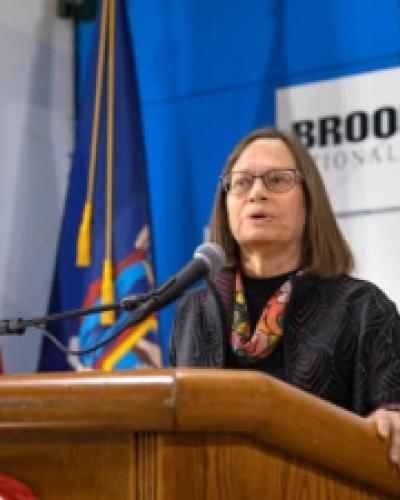Construction is complete and the first major test was a success, so a celebration was in order to mark these accomplishments of the Cornell-Brookhaven ERL Test Accelerator facility, known as CBETA. In time, it is expected to become the most energy-efficient, high-performance accelerator ever built.
The Dec. 5 event was attended by staff, university leaders, industry partners and government representatives, including Alicia Barton, president and CEO of the New York State Energy Research and Development Authority (NYSERDA), which funded the project. Thomas Roser, chair of BNL’s Collider-Accelerator Department, represented Brookhaven Lab, Cornell’s partner in the CBETA project.
Housed at the Wilson Synchrotron Lab, this prototype particle accelerator is an energy recovery linac (ERL), in which the energy of electron beams accelerated by superconducting radio frequency units is captured, then reused to accelerate the next beam of particles. “Linac” is short for “linear accelerator.”
This type of energy recovery – first proposed in 1965 by Cornell physicist Maury Tigner, who attended the celebration – can be crucial for large particle accelerators, which require hundreds of megawatts to operate. CBETA’s energy efficiency is further enhanced by the use of permanent magnets rather than power consuming electro-magnets, to steer the beams. A key test in June showed that CBETA can recoup nearly 99.8% of the energy of its beams.
Ritchie Patterson, director of the Cornell Laboratory for Accelerator-based ScienceS and Education, described CBETA as a new paradigm for energy-efficient particle accelerators, one that has gradually taken shape over the last five years as the team members designed, built and installed its many components.
Follow this link to read the full Cornell Chronicle article.






